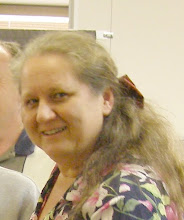Welcome to the Dead Centre of Queensland!
The name is not intended to be interpreted geographically but rather as an amusing reference to our hobby of photographing the cemeteries of Queensland. That is, we aim to photograph all the surviving headstones and index them. You can admire our handywork at:
http://www.chapelhill.homeip.net/FamilyHistory/Photos/
Living in Brisbane as we do, realistically the cemeteries we photograph tend to be within daytrip range of Brisbane, so our site is pretty much about the cemeteries of South-East Queensland. But still we may get to other parts as time permits (which probably means when we retire, an event that will be hastened by a win on Gold Lotto).
People often ask why do we do it. That's a good question and, in truth, we never set out to do anything more than one cemetery out the back of a local church when we started. But people liked it and encouraged us to do other cemeteries and so the site grew like topsy. Of course, this means that we made design choices early in the process that might not have been the ones we would have made if we could have forseen where we'd end up. The underlying motivation is family history. We've travelled across the globe to find headstones for our ancestors, but realistically not everyone can do this. So, by photographing cemeteries and putting the photos onto the WWW, we bring the cemetery to you.
Last time I looked we'd photographed about 140 cemeteries. This sounds pretty impressive but the size of the cemeteries varies considerably. We have a couple of cemeteries with no surviving headstones, so there are just some general photos of the area, and several with less than 10 headstones. At the other end of the scale we have cemeteries with over 1000 headstones. But a lot are in the order of 100-200 headstones.
And headstones vary in their difficulty to capture photographically. Sometimes it's easy, you just stroll all the neatly maintained rows going snap, snap, snap with the digital camera, one headstone, one photo. Sometimes it's not easy. The cemetery is an overgrown wilderness full of prickles, snakes and insects. The headstones are lying on the ground broken in several pieces hidden in the undergrowth. Or the headstones have suffered erosion with the weather and passing of time and are now almost unreadable. Such headstones need many photos, from different angles with different zooms, trying to catch that slight edge to the lettering that allows you to read it. The easy-to-read headstones are just photographed and transcribed at home from the photo. The hard-to-read headstones must be transcribed at the cemetery, so some headstones take many minutes compared with a few seconds for others.
But while it is easier to photograph newer well-maintained cemeteries, the real need is to photograph the older unmaintained ones. For those cemeteries are where the need for conservation is greatest. Now we don't have it in our power to physically conserve these cemeteries, but we do have the power to digitally preserve them. Already many of these old cemeteries are hard to find -- they get overgrown and people simply forget they exist, or they are in the middle of some farmer's field. So one of our goals is to record the location of these cemeteries using our GPS and publish those coordinates on our WWW site too. The availability of Google Earth and Google Maps to display these locations has been invaluable to us.
Anyhow, welcome to our new blog! Come visit our WWW site and find some relatives!
Tuesday, January 30, 2007
Subscribe to:
Comments (Atom)
